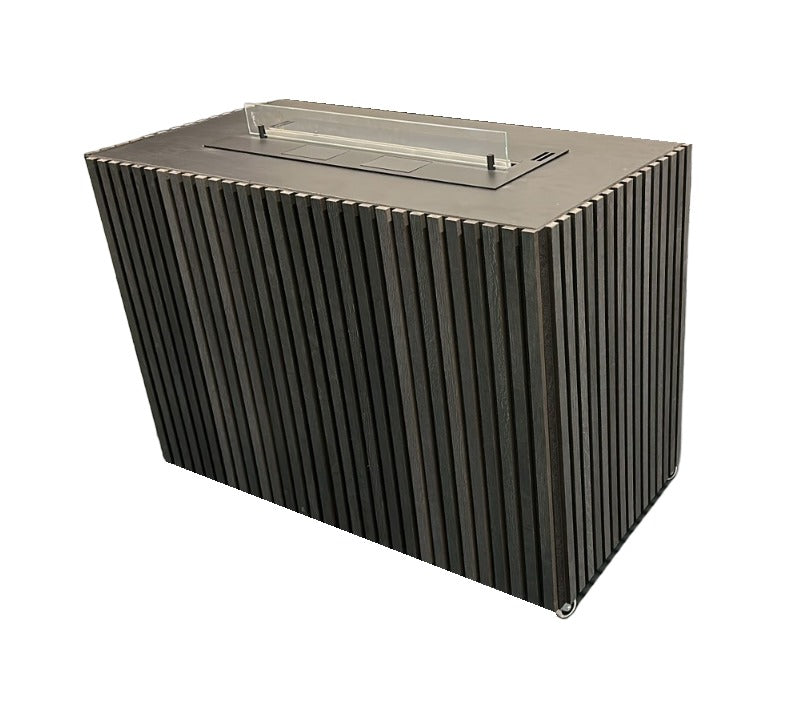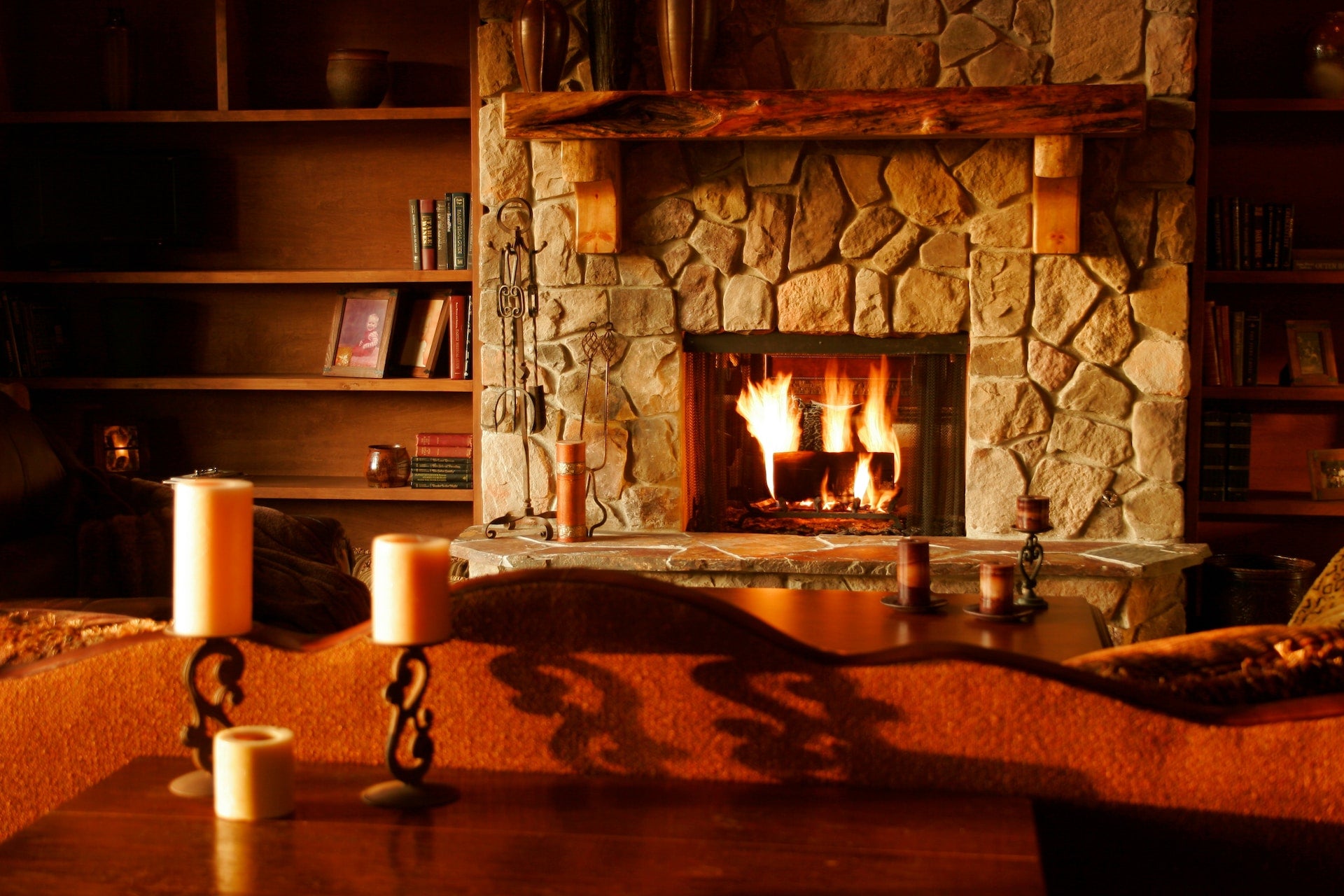
How to Install a Freestanding Bio-Ethanol Fireplace with Automatic Burner Yourself

Are you looking for a striking element for your interior that adds both warmth and atmosphere? Then consider a freestanding bio-ethanol fireplace with an automatic burner. These modern fireplaces combine the convenience of automatic ignition with the natural beauty of bio-ethanol flames. In this article we will take a closer look at the process of installing such a fireplace in your interior. We discuss the advantages of freestanding bio-ethanol fireplaces, the possibility of installing a bio fireplace yourself and how to integrate automatic burners for a touch of technological elegance.
Why Choose a Freestanding Bio-Ethanol Fireplace?
Freestanding bioethanol fireplaces are a fantastic addition to any home. Not only do they provide a beautiful visual element, but they are also flexible in placement. Their self-contained design allows you to place them virtually anywhere in your home without the need for a chimney or flue. Whether you want to create a cozy atmosphere in the living room, a touch of romance in the bedroom or a relaxing ambiance on your terrace, these fireplaces can adapt to any environment.
Installing a Bio Fireplace Yourself: Steps and Considerations
Installing a bio-ethanol fireplace yourself requires some planning and accuracy, but the result can be astonishing. Here are the steps to follow
Step 1: Creating a Frame for the Fireplace
A successful installation of your freestanding bioethanol fireplace starts with the solid construction of a frame in which the fireplace will rest elegantly. This frame is more than just a structural unit; it is the foundation upon which the beauty and functionality of your fireplace will thrive.
Selecting the right material for your frame is essential. Choose durable and sturdy materials that can withstand the heat that your fireplace will generate. Wood and metals are popular choices because of their stability and structural integrity.
Build your frame with utmost precision and attention to detail. It must not only be sturdy, but also level to ensure that your fireplace is perfectly supported. A level frame not only prevents unwanted movements, but also contributes to the safety and durability of the entire project.
This frame will act as the canvas for your fireplace, onto which you will carefully apply all the aesthetic and functional elements. Remember that this frame is the foundation on which you will build further steps, so take your time to ensure it is perfect before moving on to the next stage of the installation process.
After completing this crucial first step, you will find that you have laid a solid foundation for creating your own custom bioethanol fireplace. With this frame as a guide, you can continue installing the fireplace, integrating automatic burners and adding the final finishing details. Remember that a well-built frame provides not only stability and support, but also a sense of satisfaction and pride with every flame that burns within it.
So, before you begin the next steps in this exciting built-in project, take the time to carefully create this frame. It will be the backbone of your fireplace and it will guide you in creating a masterpiece that will add warmth and atmosphere to your home for years to come.

Step 2: Choose the Correct Dimensions
Now that you've created a sturdy frame as the foundation for your freestanding bioethanol fireplace, it's time to pay attention to the dimensions that will define your fireplace. Finding the perfect balance between height, width and depth is vital to creating a fireplace that is not only visually appealing, but also works safely and efficiently.
Start by determining the ideal height of your fireplace. Consider the overall aesthetics of the room in which the fireplace will be installed. Choose a height of 60 to 70 centimeters to ensure that your fireplace stands out and integrates seamlessly into your interior. This height also provides enough space for the flames to dance and create an enchanting display of light and heat.
The depth of your fireplace is just as important as its height. A depth of 40 to 50 centimeters offers the right balance between space saving and functionality. This allows the flames to spread elegantly without overwhelming the space. The result is a fireplace that not only impresses with its appearance, but also creates a cozy ambiance in which you can relax and enjoy.
Of course, it's not just the height and depth that matter; the width of your fireplace also plays a crucial role. Take the available space into account and choose a width that is proportional to the rest of your decor. It is important that your fireplace is in harmony with its surroundings and does not appear too obtrusive.
Another factor to keep in mind is the space around your fireplace.
A minimum distance of 10 centimeters on all sides is essential to not only ensure the safe operation of your fireplace, but also to allow sufficient air circulation. This prevents overheating and ensures that your fireplace burns consistently and efficiently.
With these carefully chosen dimensions you create a fireplace that is perfectly in balance with its surroundings and that is both aesthetically pleasing and functional. It is a step towards creating a masterpiece that will add warmth, beauty and atmosphere to your living space. So, before you move on to the next stage of the installation process, take the time to choose the right dimensions - a decision that will bring you years of enjoyment.
Step 3: Use Heat Resistant Materials
Now that you have chosen the right size and dimensions for your fireplace insert, it is time to pay attention to an essential aspect that will determine the durability and safety of your project: the use of heat-resistant materials. These materials play a crucial role in creating a fireplace that not only looks beautiful, but is also long lasting and safe to use.
When building the frame for your fireplace, it is vital to use heat-resistant drywall, blocks and paint. These materials are specially designed to withstand high temperatures and the intensity of flames. This allows you to enjoy your fireplace without worrying about damage to the structure or potential safety hazards.
The use of heat-resistant materials goes beyond just building the frame. It is also important when ventilating the fireplace. Make sure you ventilate the fireplace well to remove excess heat and promote optimal combustion. Good air circulation contributes to the efficiency and safety of your fireplace.
Another important aspect is sealing the sides of your fireplace. Heat-resistant sealant is essential for this. Using heat-resistant sealant ensures that no heat escapes and that the fireplace works safely and effectively. This not only prevents possible damage to the surrounding materials, but also minimizes the risk of overheating.
Using heat-resistant materials is an investment in the longevity and safety of your built-in fireplace. It gives you peace of mind and ensures that your fireplace can withstand the thermal challenges associated with burning bioethanol. So, as you go through the next steps of the installation process, remember that using heat-resistant materials is an essential step towards a fireplace that is both durable and safe.

Step 4: Installation and Finishing
Now that you have built the frame and ensured the correct dimensions and heat-resistant materials, it is time to put your bioethanol fireplace in place and put the finishing touches on this masterpiece of functionality and aesthetics.
Accuracy is very important when placing the fireplace in the frame. Make sure the fireplace rests firmly and securely, without any wobbling motion. This not only guarantees the stability of the fireplace, but also the safety of the entire project.
When creating openings at the front or sides of the fireplace you are making a crucial step in allowing heat dissipation. This ensures that the released heat spreads in a controlled and safe manner, which is essential for the safe operation of your fireplace and the prevention of overheating.
A final and important step in this phase is the finishing. Choose a high-quality heat-resistant paint that matches the aesthetic of your interior. A beautiful finish not only adds to the visual appeal of your fireplace, but also protects against corrosion and wear from the heat of the flames. After you apply the paint, patience is a virtue. Allow the paint to dry sufficiently before proceeding with the final part of the installation process.
Now that your fireplace is firmly in its frame and has been given a beautiful finish, you are almost ready to enjoy the warmth and ambiance it will provide. But before you do that, there are a few final steps to go. In the next phase of installing an automatic burner in your freestanding fireplace, we will focus on fuel management and the necessary precautions to ensure a safe and enjoyable fireplace experience.
Installing Automatic Burners: Elegant Technology
To take comfort to a higher level, you can consider installing an automatic burner. These modern burners offer convenience with remote control or even via an app on your smartphone. They provide effortless ignition and flame height control, resulting in a personalized fire experience.
Conclusion
Installing a freestanding bio-ethanol fireplace with an automatic burner is a fascinating project that combines beauty and technology. With careful planning, use of heat-resistant materials and attention to detail you can create a breathtaking fireplace that blends seamlessly into your interior. Always take the time to choose the right burner and consult with experts for expert advice. Once completed, you will enjoy the warmth and atmosphere you have created yourself.
For more information about freestanding bio-ethanol fireplaces and automatic burners, please take a look at our website. Do you have questions or need help choosing the right fireplace? Do not hesitate to contact us by email or telephone.
Blog written by a marketing communications agency Marcom.nl.


